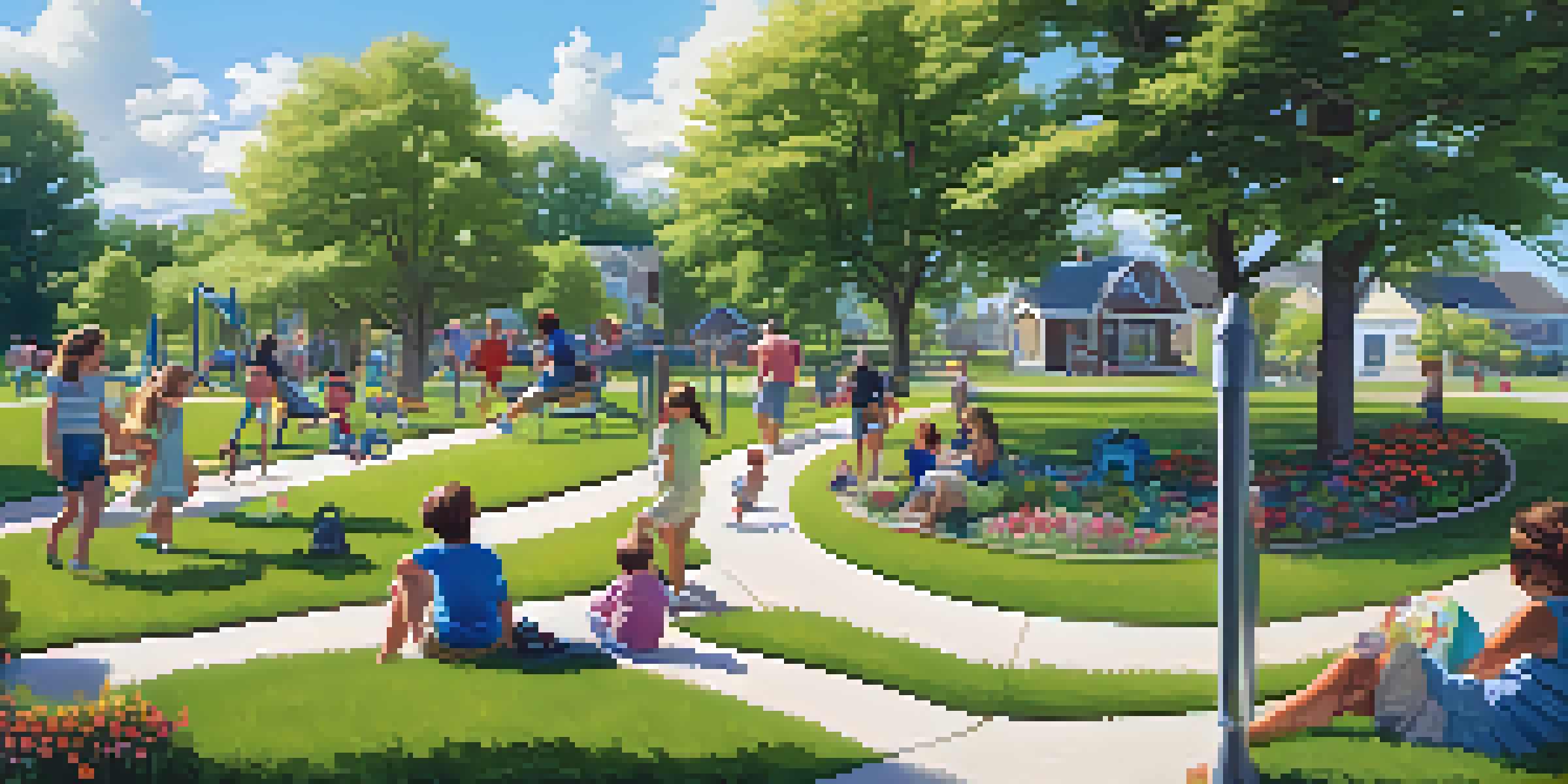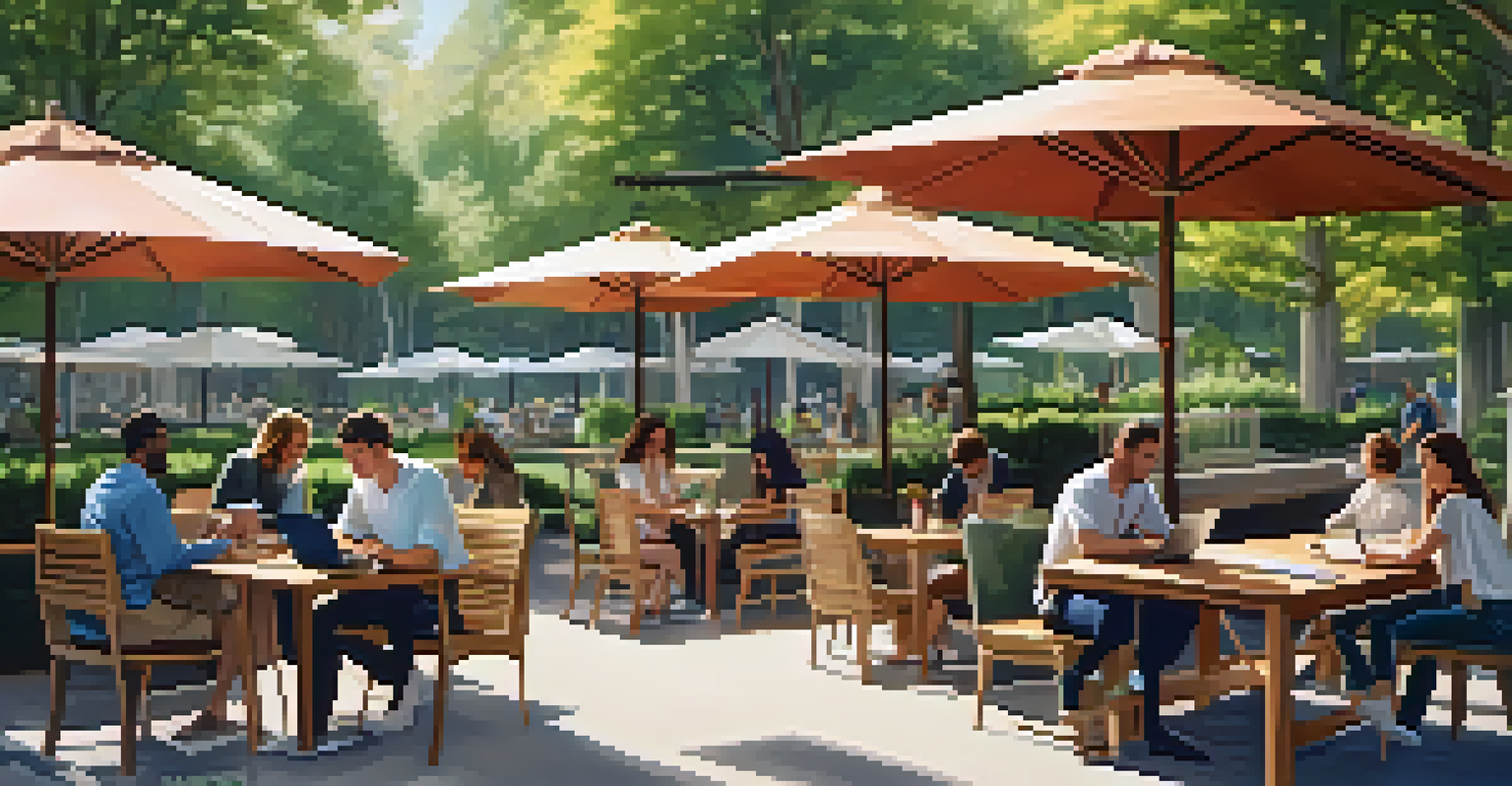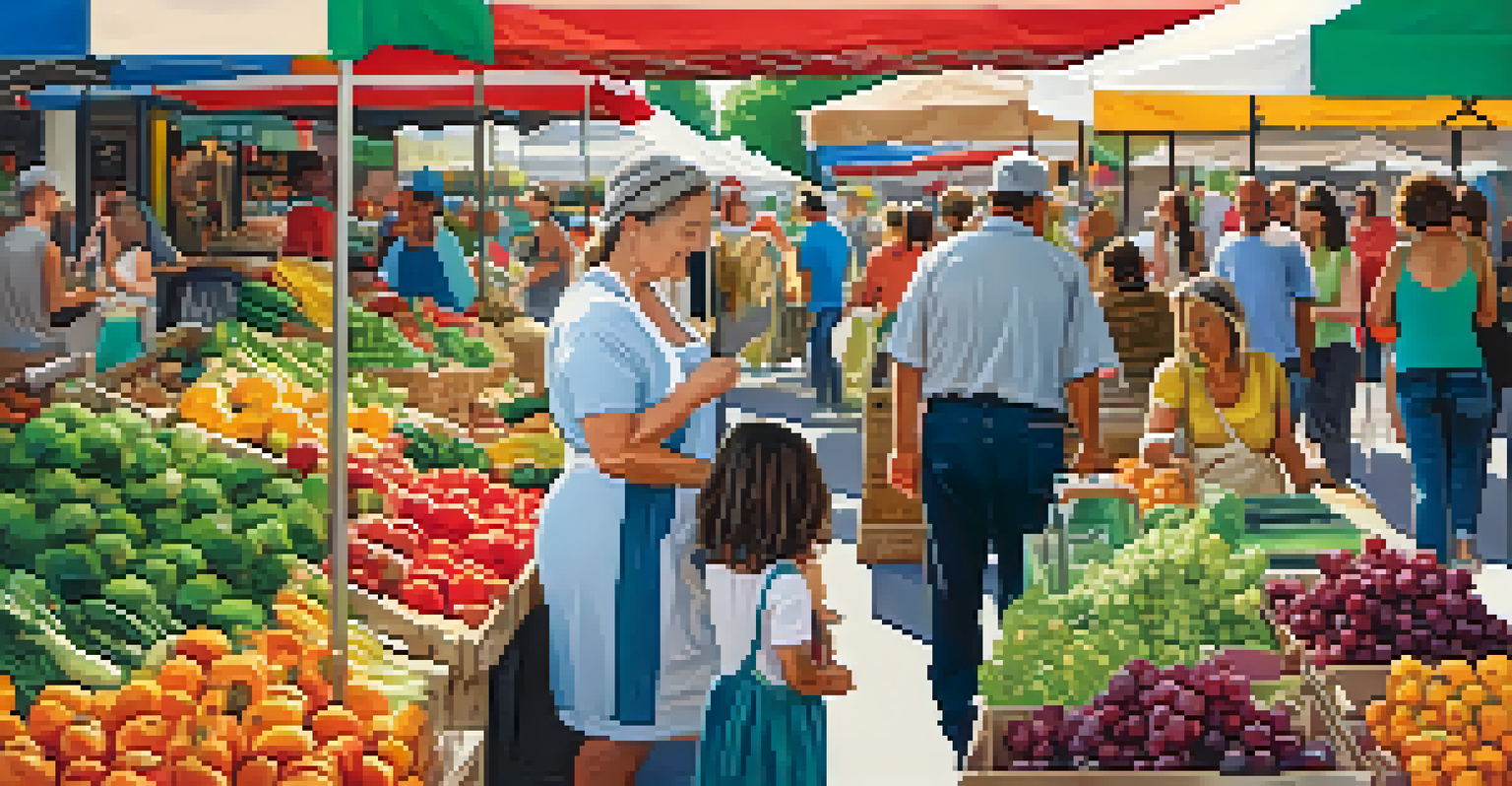Trends in Suburban Amenities: Catering to New Residents

The Rise of Flexible Workspaces in Suburbs
With remote work becoming more common, suburbs are adapting by creating flexible workspaces. These co-working spots allow residents to work close to home while enjoying a professional environment. Imagine sipping your morning coffee while finalizing a report instead of navigating rush hour traffic.
The future of work is not about where we work, but how we work together.
These spaces often feature high-speed internet, meeting rooms, and even networking events, making them an attractive option for freelancers and remote employees. As a result, residents can maintain a work-life balance without sacrificing productivity. This shift not only benefits individuals but also boosts local economies.
Furthermore, these flexible workspaces encourage community interaction, fostering connections among residents. It’s not just about getting work done; it’s about building relationships that can lead to collaboration and innovation in the area.
Enhanced Outdoor Spaces for Recreation and Relaxation
As more people flock to the suburbs, the demand for quality outdoor spaces has surged. Parks, walking trails, and recreational areas are being redesigned to cater to families, fitness enthusiasts, and nature lovers alike. Picture a vibrant park where families picnic while children play on modern playgrounds.

These enhanced outdoor venues often include features like fitness stations, dog parks, and community gardens. This variety not only promotes a healthier lifestyle but also encourages residents to spend more time outdoors and engage with their neighbors. The suburbs are transforming into vibrant hubs of activity.
Flexible Workspaces Boost Local Economy
Suburbs are embracing co-working spaces, allowing residents to work close to home while enhancing productivity and community interaction.
Plus, outdoor spaces are increasingly designed with sustainability in mind, incorporating native plants and eco-friendly materials. This focus not only beautifies the area but also helps preserve local ecosystems, proving that recreational spaces can be both enjoyable and environmentally conscious.
A Culinary Boom: Diverse Dining Options Emerge
The culinary landscape in suburban areas is evolving, with an influx of diverse dining options to cater to new residents. From trendy food trucks to international cuisine restaurants, there's something for every palate. Imagine enjoying a taco from a local food truck one day and a gourmet burger from a nearby bistro the next.
Sustainability is not a destination, but a way of life.
These dining establishments not only enhance the local culture but also provide a gathering place for the community. Food festivals and farmer's markets are becoming popular, encouraging residents to support local businesses while enjoying delicious food. It’s a win-win for everyone involved.
Additionally, many suburban restaurants are focusing on farm-to-table practices, sourcing ingredients locally. This trend not only supports local farmers but also ensures fresher meals for diners, creating a strong connection between the community and its food sources.
Health and Wellness Amenities on the Rise
As health consciousness grows, suburban areas are increasingly incorporating wellness amenities. Gyms, yoga studios, and wellness centers are popping up, encouraging residents to prioritize their physical and mental well-being. Imagine having a state-of-the-art gym just a short walk from your home.
These facilities often offer a variety of classes and programs, catering to all fitness levels. Whether you’re a seasoned athlete or just starting your fitness journey, there’s something for everyone. This focus on wellness not only helps individuals but also fosters a sense of community as residents work towards common health goals.
Diverse Dining Options Flourish
An influx of restaurants and food trucks in suburbs is creating vibrant culinary scenes that promote local culture and community engagement.
Moreover, many suburbs are integrating holistic health practices, including meditation spaces and nutrition workshops. This comprehensive approach to health helps residents understand the importance of overall well-being, creating a supportive environment for healthier lifestyles.
Family-Friendly Amenities: Schools and Play Areas
Suburban areas are increasingly focusing on family-friendly amenities to attract new residents. Quality schools, safe playgrounds, and community centers are becoming essential factors for families considering a move. Picture a neighborhood where children can play freely while parents feel secure knowing they’re in a safe environment.
These amenities not only provide recreational opportunities but also foster a strong sense of community among families. Neighborhood events, like movie nights and sports leagues, bring people together, creating bonds that last for years. This community spirit is appealing to families looking for a supportive environment.
Furthermore, many suburbs are investing in educational programs and after-school activities, ensuring children have access to quality learning experiences. This commitment to education not only benefits families but also enhances the overall appeal of the community.
Tech-Driven Amenities for Modern Living
As technology continues to evolve, suburban areas are integrating tech-driven amenities to enhance residents' lifestyles. Smart home technology, high-speed internet, and app-based services are becoming standard expectations for new residents. Imagine controlling your home’s lighting and temperature from your smartphone, all while enjoying a quiet evening in.
Smart city solutions, such as traffic management systems and energy-efficient public services, are also being implemented. These innovations not only improve daily living but also contribute to a more sustainable future. Suburbs are transforming into smart communities, making life easier and more efficient for everyone.
Sustainability Initiatives Take Root
Suburbs are adopting green practices such as energy-efficient buildings and public transport options, fostering a healthier environment for residents.
Moreover, tech-driven amenities often include community apps that connect residents, allowing them to share information and organize events. This digital approach fosters a sense of belonging and community engagement, making it easier for newcomers to feel at home.
Sustainability Initiatives: Going Green in the Suburbs
Sustainability is a key trend in suburban development, with many communities adopting green initiatives. From energy-efficient buildings to recycling programs, suburbs are making strides towards a more sustainable future. Imagine living in a neighborhood where energy consumption is minimized, and the community actively participates in eco-friendly practices.
These initiatives not only benefit the environment but also contribute to a higher quality of life for residents. Green spaces, such as community gardens and parks, provide residents with a connection to nature while promoting biodiversity. This focus on sustainability encourages a collective effort towards environmental stewardship.

Additionally, many suburbs are incorporating public transportation and bike lanes to reduce carbon footprints. These efforts make it easier for residents to choose sustainable transportation options, ultimately fostering a healthier planet for future generations.
Community Engagement: Building a Sense of Belonging
As suburbs evolve, community engagement has become a priority for new residents. Local events, volunteer opportunities, and neighborhood gatherings are being organized to foster connections among residents. Imagine attending a community barbecue where you can meet your neighbors and learn about local initiatives.
These engaging activities not only help residents connect but also create a sense of belonging in the community. When people feel more connected, they are more likely to participate in local decision-making and contribute to the overall well-being of the area. This engagement is essential for creating vibrant and thriving communities.
Furthermore, many suburbs are leveraging social media and community apps to keep residents informed and connected. This digital outreach helps ensure that everyone feels included and aware of what’s happening in their neighborhood, enhancing the overall community experience.